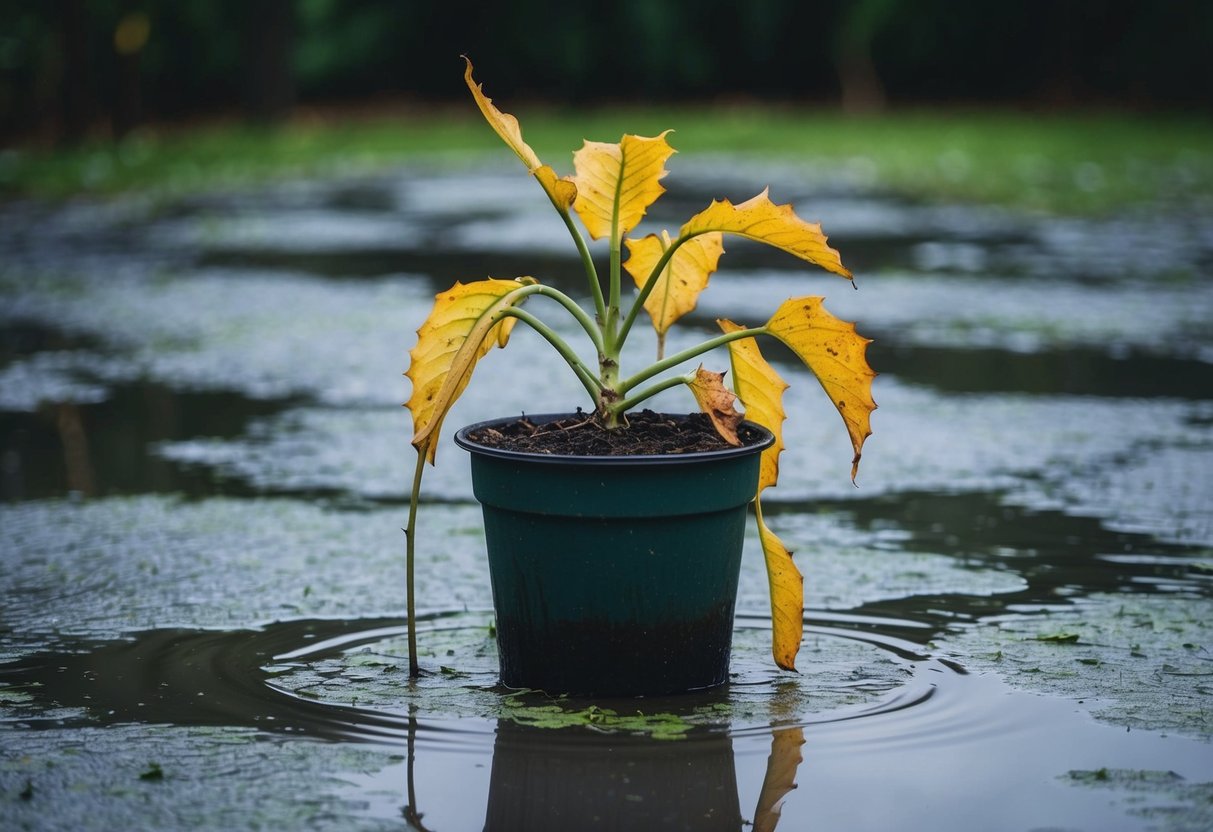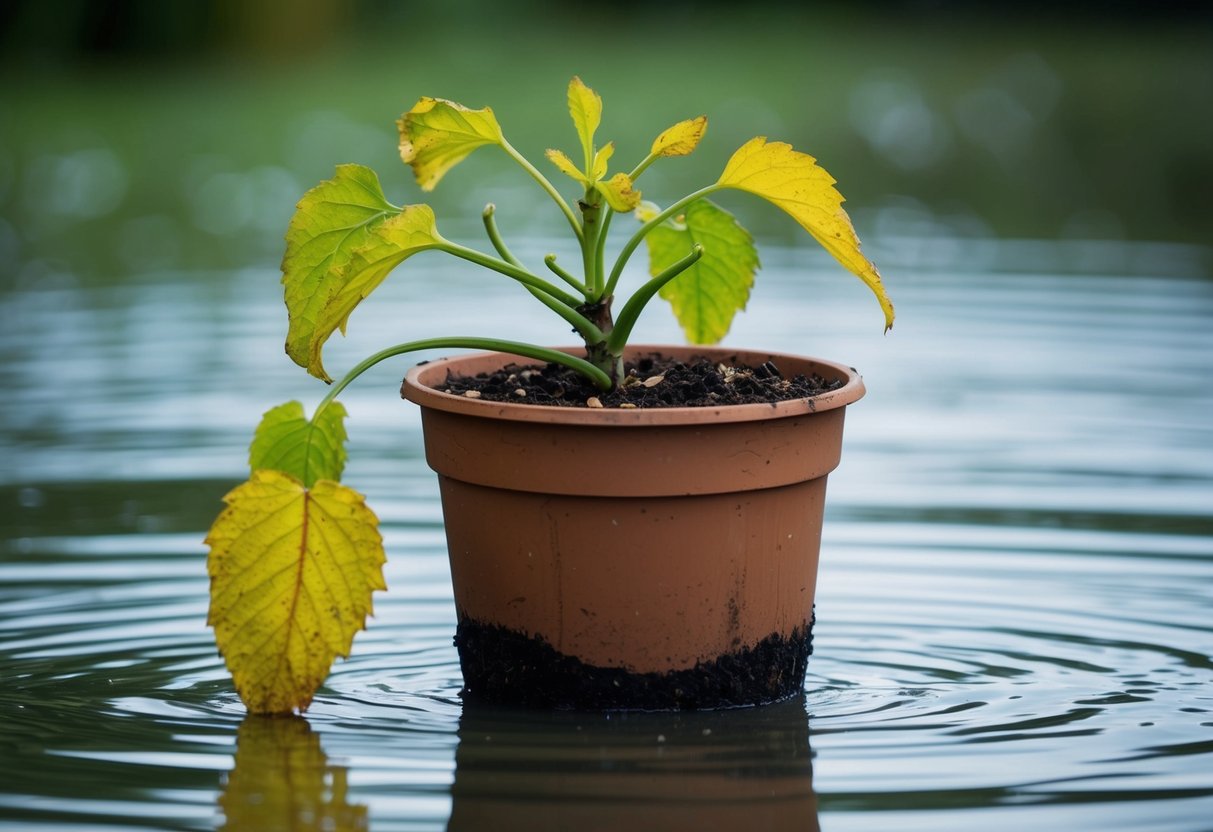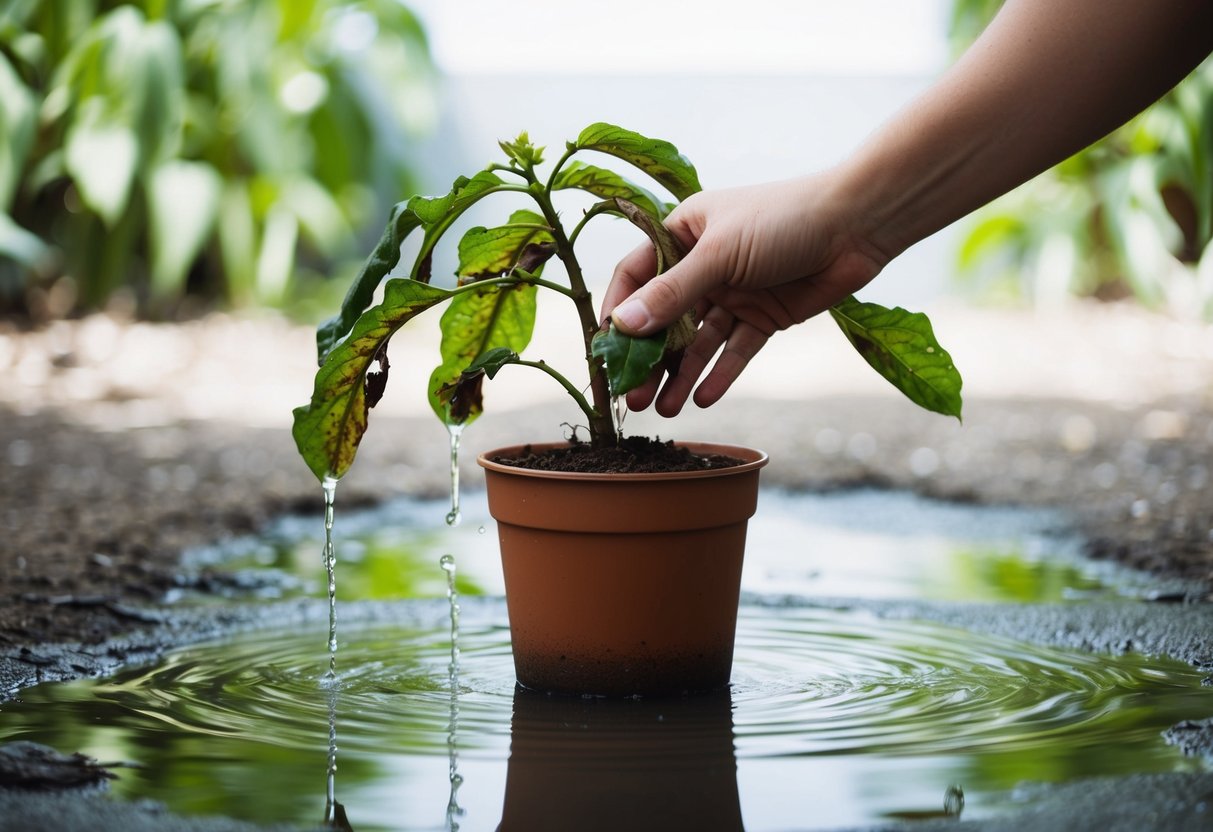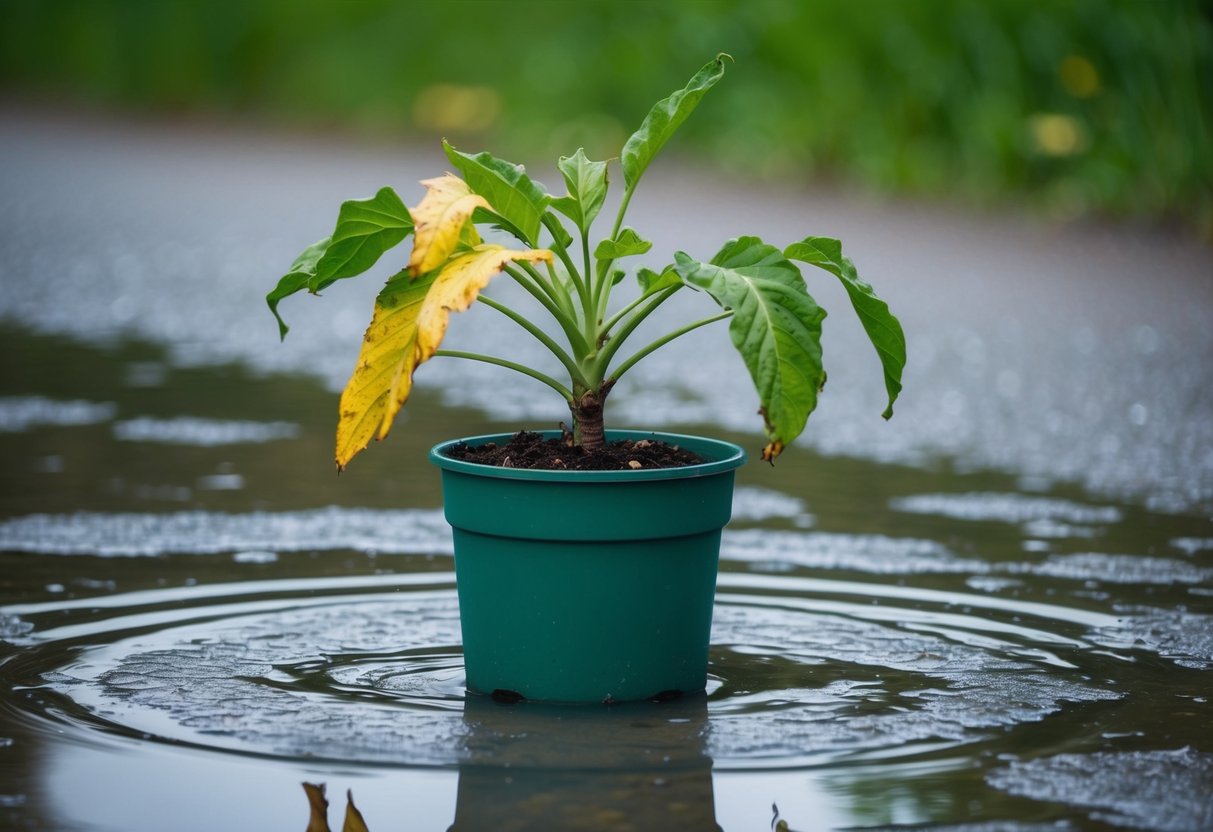How to Save a Dying Plant Due to Overwatering: Simple Tips for Recovery
Have you ever worried that you’ve been too generous with watering your plants? Many gardeners make the mistake of overwatering their plants, which can leave them struggling. You might notice yellowing leaves, wilting, or even a soggy smell.
The good news is that many overwatered plants can still be saved with the right steps.

Rescuing an overwatered plant means taking quick action to dry out the roots and give your plant a fresh start. In many cases, this involves removing the plant from its pot, trimming any rotten roots, and repotting it in fresh, dry soil.
Make sure to choose a pot with drainage holes to allow excess water to escape, which helps prevent future overwatering problems. For more detailed steps, check out this guide on how to fix overwatered plants.
Once you’ve addressed the initial problem, you can focus on giving your plant the gentle care it needs to recover. This might mean adjusting your watering schedule to better fit your plant’s needs or learning to read signs of distress before they become serious. Remember, every plant is unique, so patience and attention are key.
Identifying Overwatering

Recognizing an overwatered plant is crucial to saving it. Look for symptoms like yellowing leaves and wilting. It’s important to check both above-ground signs and the health of the roots to determine if overwatering is the cause.
Signs of Trouble
One of the first signs is yellowing leaves. This happens because waterlogged roots can’t absorb nutrients. Wilting might occur even if the soil seems moist. Overwatered plants often develop mushy stems that feel soft to the touch.
Edema is another indicator. You’ll see blisters or bumps on leaves, caused by excess water. These blemishes are your plant’s way of showing distress. Stay alert to these signs, as early detection can improve your plant’s chances of recovery.
Assessing Root Health
To assess root health, gently remove your plant from its pot. Healthy roots are firm and white. If you notice brown, mushy areas, these are signs of root rot. This condition occurs when plants sit in soggy soil for too long.
Carefully trim away rotted roots using clean scissors. Ensure your plant’s pot has drainage holes to prevent future overwatering. Choosing a well-draining soil mix can also help. Creating the right environment will support root recovery and the overall health of your plant.
Immediate Actions to Take

If you’ve been overwatering your plant, it’s important to act fast. You need to stop adding water, check the plant’s drainage, and remove any damaged parts.
Stop Watering
When a plant is overwatered, the first thing you must do is stop giving it more water. Plants can become waterlogged, which prevents oxygen from reaching the roots. Let the soil dry out before you consider adding more water.
Keep an eye on the soil by feeling its surface. It should be dry to the touch. Be patient—this might take a few days. During this time, it is crucial to resist the urge to water, even if the plant looks wilted. The plant needs a break to breathe and recover.
Improve Drainage
Good drainage is vital to prevent future overwatering issues. Start by checking if your pot has enough drainage holes. If it doesn’t, consider transferring your plant to a pot that allows water to escape. Holes in the bottom of the pot help excess water flow out, protecting the roots.
If repotting isn’t possible, you might add some materials like perlite or sand to the top layer of soil. These materials can help improve drainage quickly until a more permanent solution is possible.
Remove Affected Leaves and Roots
Inspect your plant for rotting leaves and roots. Damaged roots often appear brown, mushy, and may have a bad odor. Use clean, sharp scissors to trim damaged roots carefully. This helps prevent further decay and disease from spreading.
Removing affected leaves and roots restores plant health and can prevent further damage. Just be gentle while trimming, as healthier parts of the plant need to be preserved. Discard the cut-off portions properly to avoid any contamination. By doing this, you are giving your plant a fresh start, allowing it to absorb nutrients more effectively.
Soil and Pot Management

Managing the soil and pot of your plant can make a big difference in its health. Ensuring proper drainage, choosing the right soil mix, and selecting an appropriate pot size are crucial steps to recover an overwatered plant.
Choosing the Right Soil Mix
When selecting a soil mix, look for one that provides excellent drainage. Potting soil formulated for houseplants usually works well. Ingredients like perlite or sand help keep the soil loose, preventing it from becoming waterlogged.
A mix with these components allows air to reach the roots, which is essential for plant health. If you’re using garden soil, consider adding extra materials to improve its drainage.
Keep the soil lightly moist but ensure that the top layer dries before watering again.
Selecting the Proper Pot Size
The size of the pot matters too. A pot that’s too big can hold more water than the plant needs, leading to soggy soil. Choose a pot that is just a bit larger than the plant’s root ball.
This helps prevent excess moisture from surrounding the roots.
Proper drainage in the pot is also necessary. Always choose pots with holes at the bottom. This allows excess water to escape and prevents water from pooling around the plant’s roots, reducing the risk of root rot.
Repotting Considerations
Repotting is an important step when dealing with an overwatered plant. When repotting, gently remove the plant and inspect its roots. Trim any damaged or decaying roots to prevent further rot.
Transfer the plant to a fresh pot with a well-draining soil mix. It’s beneficial to add a layer of small stones or broken clay pot pieces at the bottom of the pot to enhance drainage.
Repotting also gives your plant access to new nutrients. Be gentle during the process to avoid additional stress on the plant. Adjust your watering routine to let the new soil dry out between waterings.
Long-Term Care Strategies

Taking care of a plant affected by overwatering requires attention and consistency. You’ll want to adjust how you water your plant and keep a close eye on the soil moisture to ensure your plant stays healthy.
Adjusting Watering Habits
To prevent overwatering, set up a consistent watering schedule. Check the soil regularly by sticking your finger about an inch deep. Only water if it feels dry at that depth. This helps avoid overwatering while ensuring the plant gets enough moisture.
Using pots with drainage holes can also help. This allows excess water to escape, ensuring the roots aren’t sitting in water. You might also try bottom watering by placing water in a saucer and letting the plant soak it up for about 30 minutes. Just make sure to remove the plant from the water once time’s up.
Monitoring Soil Moisture
Keeping an eye on soil moisture is key to avoiding root rot. Consider using a soil moisture meter to get an accurate reading. This tool provides a better understanding of when it’s time to water.
It’s also a good idea to learn the specific moisture needs of your plant. Different plants have different requirements, so doing a bit of research can be helpful.
Understanding Plant Variety Needs

Different types of plants have unique watering needs to stay healthy. Knowing how much water succulents, cacti, and other house plants require helps you care for them better. This ensures their root systems remain strong and their leaves are vibrant.
Succulents and Cacti
Succulents and cacti are adapted to arid environments, making them resistant to low water levels. They store water in their thick leaves and stems, which allows them to survive in dry conditions. Overwatering often leads to root rot because their root systems don’t cope well with excess moisture.
Water these plants only when the soil is completely dry. A good rule of thumb is to feel the soil about an inch deep. If it’s dry, it’s safe to water. During colder months, reduce the frequency even more. Use well-draining soil in a pot with drainage holes to prevent standing water, enhancing plant health significantly.
Other House Plants
Most other house plants prefer more moisture compared to succulents and cacti. The frequency depends on the plant type, size, and environment.
You might need to water them once or twice a week. Check if the top inch of soil is dry before watering to avoid overwatering. This careful monitoring helps maintain their root systems.
Ferns and peace lilies, for example, do well with slightly moist soil. On the other hand, plants like snake plants need less frequent watering. Observing the leaves also gives cues—yellowing can signal too much water.
Adjust your watering routine based on these signals to keep your house plants thriving.







